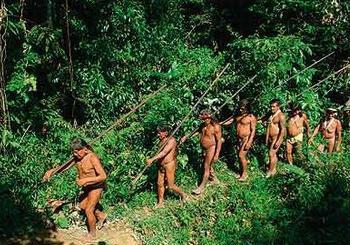In 1990, the Waorani won the rights to the Waorani Ethnic Reserve 6,125.60 km2 (2,365.11 sq mi). The protected status of Yasuní National Park, which overlaps with the Waorani reserve, provides some measure of environmental protection. Additionally, the government has created a protected zone inside of Yasuni, to avoid contact with the Tagaeri and Taromenane.


However, much of their land is illegally logged as corporations extract natural resources, forcing them onto smaller and smaller parcels.
Yasuni is home to two uncontacted indigenous tribes, the Tagaeri and the Taromenane.
The Tagaeri are an eastern Huaorani people living in Yasuni National Park, in the Ecuadorian Amazon Basin, named (in Wao-Terero, the Huaorani language) after one of their members, Tagae. Nearby Kichwa communities sometimes refer to them as Awashiri, or "high-ground people". They live a hunting and foraging lifestyle and have resisted outside contact, making them one of the so-called uncontacted peoples of the world. In addition to Tagaeri, the area is home to their kin, the Taromenane, another eastern Huaorani group.
The Taromenane are an uncontacted people living in Yasuni National Park, at the Ecuadorian Amazon Basin. Together with the Tagaeri they make up the two last known indigenous groups living in voluntary isolation in Ecuador. The clan is believed to be distantly related to the Huaorani people. It is estimated there are 150–300 Taromenane still maintaining a nomadic lifestyle in the rainforest, and perhaps only 20–30 surviving Tagaeri, although these numbers are uncertain.The Taromenane has recently been under threat from oil developments and illegal logging in the Yasuni National Park. In February 2008, authorities in Ecuador agreed to investigate reports that five tribespeople belonging to the Taromenane and Tagaeri tribes had been killed by illegal loggers.






